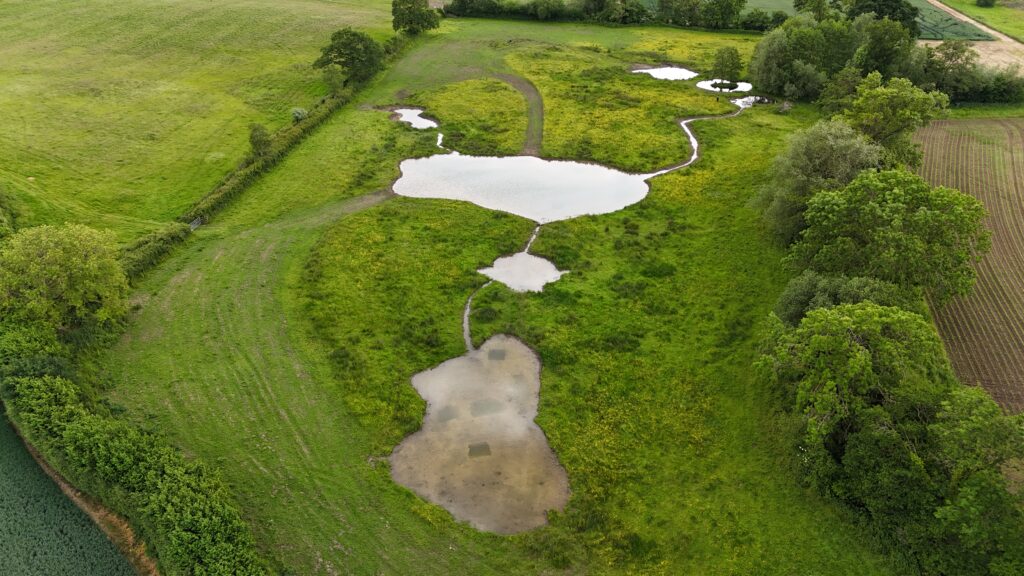Using nature to tackle flooding in Shrewsbury and beyond
Flooding is a serious challenge along the Rea Brook, especially in villages across the catchment and at its confluence with the River Severn in Shrewsbury. The Rea Brook Demonstrator project is testing how natural solutions can slow the flow of water, protect communities, and restore habitats – all in ways that work alongside farming, the dominant land use in the catchment.
This flagship initiative is also exploring how a green finance model could support future investment in nature-based solutions, so projects like this can continue to grow.
What we are doing
The project works with farmers and landowners to create natural features that store and slow floodwater. The main approaches include:
-
Installing leaky dams to slow the flow in streams and ditches.
-
Developing wetland scrapes and pools to hold water during storms and release it slowly.
-
Reconnecting rivers with their floodplains so more land can store water in high flows.
-
Planting woodland to absorb rainfall and improve soils.
-
Exploring green finance models to fund long-term water management solutions.
So far, we have:
-
Installed 46 leaky dams.
-
Planted 2 hectares of woodland.
-
Created around 45 wetlands, ranging from larger pools to small scrapes.
-
Worked with 20 landowners across the catchment, with many more sites planned.
Why it matters
These interventions help reduce the risk of flooding downstream in Shrewsbury and surrounding villages, while also boosting biodiversity, improving water quality, and protecting soils.
By linking flood resilience with farming and nature recovery, the project is creating solutions that benefit people and wildlife alike.
Voices from the project
One farmer told us:
“Putting scrapes in and leaky dams, they do mean something to us farmers. You feel like you’ve given something back. If you’ve got the space it’s nice to think you can help manage the water.”
Another highlight has been seeing small ideas grow into bigger change:
“A few landowners started by saying they might dig a small pool with a spade. Together we developed plans that now hold back far more water through scrapes, tree planting and leaky dams.”
Looking ahead
The project runs until 2027 and will continue to expand across the catchment. Alongside practical works, we are developing ways to finance nature-based solutions so they can be rolled out on a much larger scale.
By 2030, we hope the Rea Brook Demonstrator will stand as proof that slowing the flow through nature can protect communities, support farming, and create thriving rivers for the future.


